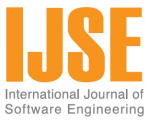Vol 3 No.2
Papers
ABSTRACT The object relational database (ORDB) management systems signify a set of interrelated objects using reference and collection attributes. The static classlevel design metrics for designing ORDB dictates the structural complexity of the object-relational schema, whereas the dynamic nature of the ORDB demands object-level assessment using runtime metrics which help determine the functional complexity of the database. Runtime coupling and cohesion metrics are deemed appropriate in measuring the Object-level behavioral complexity.In this work we use the runtime cohesion and coupling metrics for studying the dynamic behavior of ORDB by measuring the behavioral complexity of the objects in ORDBs. Experiments on sample ORDB schemas are conducted using statistical analysis and correlation clustering techniques to assess the dynamic behavior of the objects in real time relational environment. The results indicate that the object behavior in ORDB directly influences the database performance. The future works pertaining to this research form the concluding note.
ABSTRACT We present a comprehensive test case generation technique from UML models. We use the features in UML 2.0 sequence diagram including conditions, iterations, asynchronous messages and concurrent components. In our approach, test cases are derived from analysis artifacts such as use cases, their corresponding sequence diagrams and constraints specified across all these artifacts. We construct Use case Dependency Graph (UDG) from use case diagram and Concurrent Control Flow Graph (CCFG) from corresponding sequence diagrams for test sequence generation. We focus testing on sequences of messages among objects of use case scenarios. Our testing strategy derives test cases using full predicate coverage criteria. Our proposed test case generation technique can be used for integration and system testing accommodating the object message and condition information associated with the use case scenarios. The test cases thus generated are suitable for detecting synchronization and dependency of use cases and messages, object interaction and operational faults. Finally, we have made an analysis and comparison of our approach with existing approaches, which are based on other coverage criterion through an example.
ABSTRACT Defect management is one of the major issues prevailing in software industry. The main objective of the defect management is to achieve complete customer satisfaction. One of the most important steps towards total customer satisfaction is the generation of nearly zero-defect products. Both industry and research segments are continuously working in this direction. This work is an empirical analysis of data from several leading software industries. The paper shows defect distribution in small, medium and large category of projects. It reveals the existence of various types of defect patterns spanning across major phases of software development. It further analyses the most common root causes and percentage in which they contribute towards occurrences the defect patterns. The awareness of defect patterns enables one to capture of majority of defects close to defect inception point. This knowledge reduces defect injection and helps to develop nearly zero-defect product in software industry.
ABSTRACT This paper discusses the lessons learned from building a model for effort estimation. This model focuses on minimizing effort variance by enhancing the adjustments made to the functional sizing techniques. A special focus was made on the adjustment factors which reflect the application’s complexity and the actual environment in which this application will be implemented. We introduced the idea of grouping the adjustment factors to simplify the process of adjustment and to ensure more consistency in the adjustments. We have also studied, in depth, how the quality of requirements impact effort estimation. We introduced the quality of requirements as an adjustment factor in our proposed model. Our study concentrates on Egyptian companies with an objective to enhance effort estimation in these companies. We have learned a number of lessons that are discussed in the paper. From these learned lessons, we derive a group of recommendations to other researchers aiming at building similar estimation models.
ABSTRACT There is a great interest paid to the web services paradigm nowadays. One of the most important problems related to the web service paradigm is the automatic composition of web services. Several frameworks have been proposed to achieve this novel goal. The most recent and richest framework (model) is the Colombo model. However, even for experienced developers, working with Colombo formalisms is low-level, very complex and timeconsuming. We propose to use UML (Unified Modeling Language) to model services and service composition in Colombo. By using UML, the web service developer will deal with the high level graphical models of UML avoiding the difficulties of working with the low-level and complex details of Colombo. To be able to use Colombo automatic composition algorithm, we propose to represent Colombo by a set of related XML document types that can be a base for a Colombo language. Moreover, we propose the transformation rules between UML and Colombo proposed XML documents. Next Colombo automatic composition algorithm can be applied to build a composite service that satisfies a given user request. A prototypical implementation of the proposed approach is developed using Visual Paradigm for UML.
